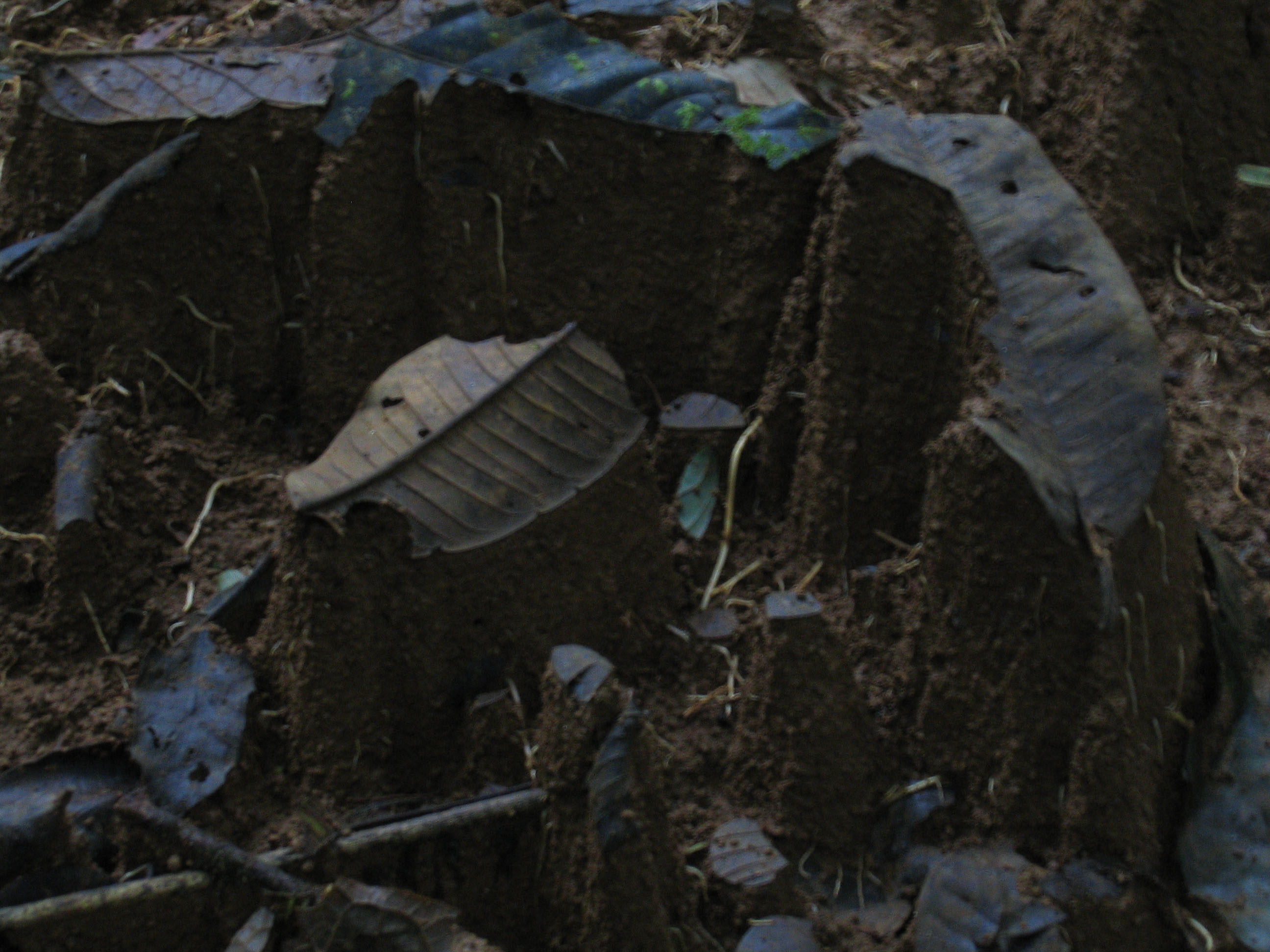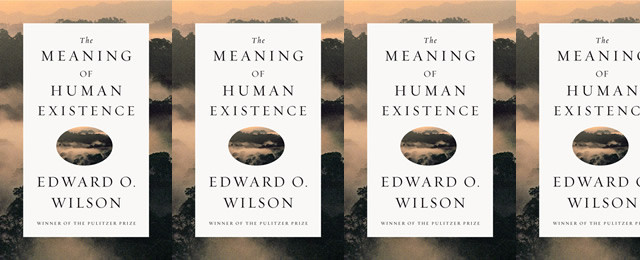I remember the day the penny dropped. As a school kid in 1975 I arrived home from school for my summer holidays to see new houses being built on rich farmland across the fields from my bedroom window. I had learned at school how Britain hardly managed to feed itself during the u-boat blockade of the 2nd world war, and asked myself: how can we afford to cover over fields with new houses while meeting our need for food?
Years later I learned from Professor Tim Lang that this works because we grow most of our food on other people's land. I was also concerned as a teenager that another problem of building on green open spaces is that there's less room for the engine of life: nature. I felt deeply that every living species is terribly important but I couldn't objectively say why. In June 2005 I was asked to give a talk at a conference in Costa Rica, thanks to the invitation of a friend who teaches at Harvard. I took a bee-line to the rain forest.

It was in the rain forest, guided by an ecologist, that I began to learn how every single plant and animal species is dependent on others in its environment for survival. A leaf with holes cut out by caterpillars creates exactly the right conditions for the insects in the leaf litter below. The leaves in the leaf litter, by resisting erosion of the soil due to heavy rainfall, are responsible for creating miniature mountain ranges and cliff faces for insects to live and feed in. When we arrived back at base, I witnessed the discovery of a creature never before seen by the ecologists, who said they thought it was new to science. At first look, everyone was staring at a stumpy snake with a massive body. But after a moment I realised this was a caterpillar the size of a cigar; the tail end of which was, incredibly, patterned to look like a snake's head. I suddenly realised that I was looking at millions and millions of years of precious natural selection that had perhaps begun by chance, but ended up with this remarkable, extraordinarily precious creature.
I wanted to know more about why and how every creature and plant is dependent on another. The ecologists told me to get 'The Diversity of Life' by Edward O Wilson, so my next stop was to find it in a book shop on Costa Rica. This is the greatest book I have ever read. If there's one book that could change the world; one book that every human being on this planet should read, I'd vote for The Diversity of Life.
I quote EO Wilson in all the talks I give to students and many of the talks I give to adults. He galvanised my approach to the green roofs of my own house (which Dusty Gedge and Kim Wilkie helped me turn into reality). In 10 years, these roofs of meadows, a hazel coppice and a hawthorn thicket, have seen an astonishing growth in biodiversity, attracted by the mix of sun-drenched topsoil (most of the world's bugs live in the top 10cm of soil, where they soak up and thrive on energy from the sun) and moist shade. Birds nest in the walls, but many more birds use these safe, secluded roof gardens as nursery grounds for their chicks in Spring. A group of hazel trees create the perfect habitat for ground feeders that can move leaves without too much wasted energy to find grubs; the hawthorn thicket is such a popular place for mothers to bring their chicks, safe from prowling cats. After just one year there were grasshoppers two floors up in the meadow, and day flying moths with black wings and pink spots were breeding and after just a few years, ecology research students were finding an astonishing and growing diversity of different wild bee types and many other insect species. Another research project also found evidence that insects rising off the garden provided welcome food for bats.
[[{"type":"media","view_mode":"media_large","fid":"3279","attributes":{"height":365,"width":540,"class":"media-image media-element file-media-large","id":"1"},"link_text":null}]]
If you don't understand why it's so important that we take every opportunity to build biodiversity, read the Diversity of Life. As Edward O Wilson said tonight:
- We must do this for the stabilisation of the global environment. "If you decide to save the living environment you will save the physical environment too. if you just concentrate on the physical environment (climate change, physical resources etc) you'll lose them both."
- Before the industrial revolution, 1 species/million species/yr was going extinct.
- Currently, 100-1000 species/million/yr are going extinct due to human activity - and the rate is increasing.
- Half the species on the planet are going extinct or on the brink of extinction.
- The biosphere that surrounds us and protects us is disappearing very quickly.
- The very existence of this biodiversity is a gift.
- We are stewards, not owners.
Then Edward O Wilson proposed and explained a solution that is gaining momentum: 'the Half Earth Plan':
This is the amount of land Edward O Wilson and other eminent biologists and naturalists have been saying for some years that we need to set aside in permanently protected areas to stave off a mass extinction crisis and ensure the survival of the 10 million other species with which we share the planet. Half of them, half for us. As Wilson said this evening: "Seems a fair deal to me!" and then he went on to explain why this is good for humans too.
"This idea is comparable to a Moonshot - it's goal orientated. People understand goals which make otherwise difficult tasks feel possible" EOW said he recognises that many people will say this is challenging. However I would point out that we have created much-loved 'Green Belts' in the UK. People cherish and defend them, so why wouldn't they do the same for Half Earth?
Then we got an amazing glimpse of the fire in this great man's belly, he talked about this biosphere that took billions of years to build; that we have scarcely begun to understand... "are we really going to be so stupid and uncaring?"... "are we going to gamble?"...he talked about the catastrophic, how we have come a long way from our barbaric ancestors; he asked "...what kind of species are we to treat the rest of life so cheaply?"... and he told us about our opportunity now "to be transcendent"... "to do no more harm to the biosphere." Finally, he concluded that we should be getting on with studies on how Half Earth can impact on economics; "we should be putting the whole thing together and stop messing around."
The discussions prompted by questions were also fascinating and amusing and stirring. There was a vivid explanation of Keystone Species, and a warning that we don't know what is a Keystone until a Keystone drops out. "Then the whole lot comes tumbling down." We heard the inspiring story of the Gorongosa National Park in Mozambique, "like a sick patient caught in an emergency and saved by one great American philanthropist, Gregg Carr." We heard of the importance of education; of the next great exploration frontier, of field biology, of the constant treasure hunt to discover the 8 million species not yet known to science, of "Lord God Surprises". We heard of the amazing little insect with bristles on its forearms that it uses to scrape fur off its prey "like plucking a chicken" before passing it around to eat. "If you don't find this interesting then you really are beyond hope!" (chuckles all round).
"Knowledge is so important... The solution is going to come by education... We need to do more really quickly." Then quoting a military man: "When all else fails, men turn to reason"... " the problem is, no wealthy banker's wife ever died of the death of a South American Parrot"...The need for action is now coming back with a sting. "This isn't just fun stuff; this is Necessity."

Edward O Wilson's latest book 'The Meaning of Human Existence' is in good bookshops now.